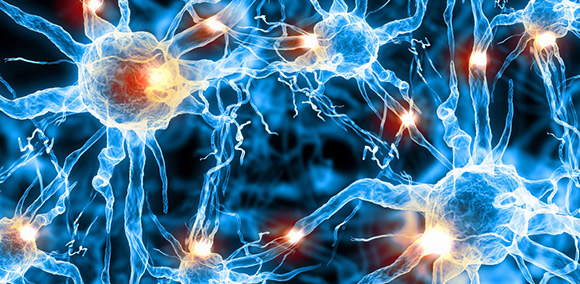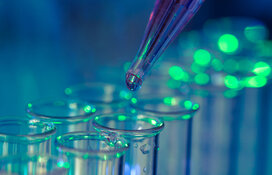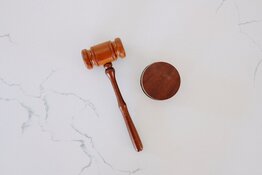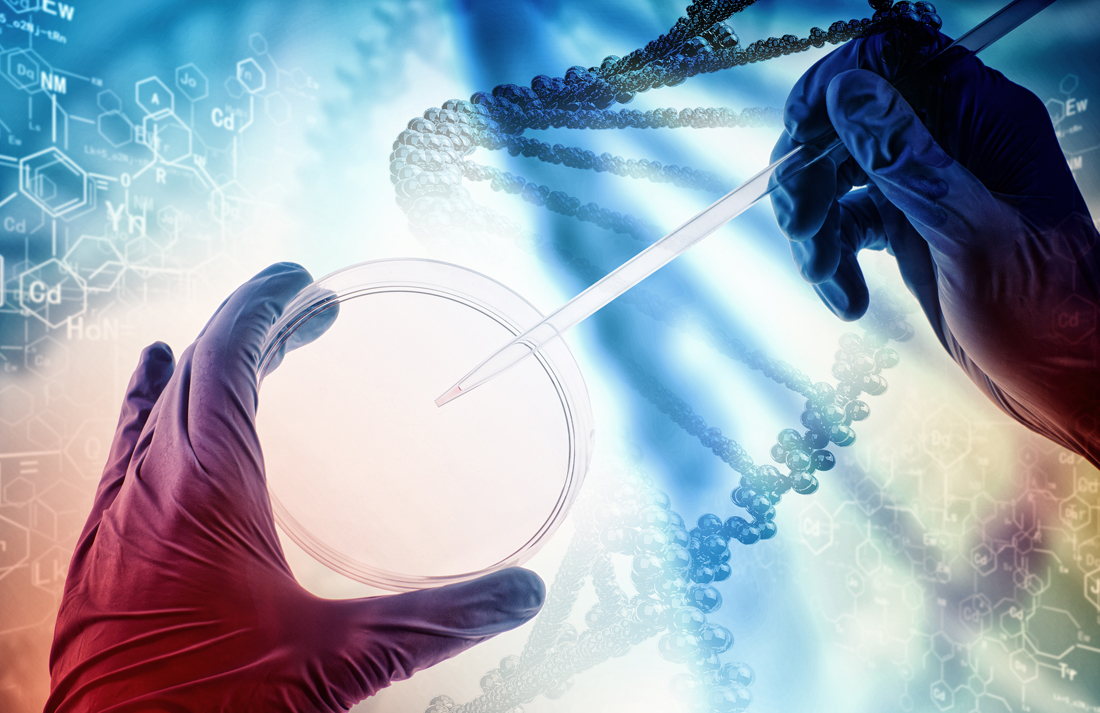The Life Sciences Report: BrainStorm Cell Therapeutics Inc. (BCLI:NASDAQ) utilizes autologous stem cell therapies for neurodegenerative diseases, including ALS, multiple sclerosis (MS) and Parkinson's disease. Please describe the origin of your patented treatment.
Tony Fiorino: NurOwn is the trade name of our technology platform. It emerged from the neuroscience lab of Dani Offen and Eldad Melamed at Tel Aviv University. They were trying to differentiate mesenchymal stem cells (MSCs) into cells that could be active in the treatment of neurodegenerative diseases. They succeeded in identifying culture conditions that induced the MSCs to assume the phenotype of a neuronal support cell; in fact, they were called astrocyte-like cells in the early days of the company. We now refer to them as MSC-NTF cells, which is the shorthand for MSCs that are secreting neurotrophic factors (NTFs).
TLSR: Do NurOwn cells have unique characteristics that differentiate them from other cell-based therapeutics undergoing clinical trials in the neurology space?
"NurOwn cells possess additional properties that 'plain vanilla' MSCs lack."
TF: A lot of companies and academic institutions are working with MSCs, both autologous and allogeneic. MSCs are immunomodulatory, and that definitely plays a role in treating not only neurologic disease, but other diseases as well. While they are MSCs, NurOwn cells possess additional properties that "plain vanilla" MSCs lack. Using our proprietary processes, we can induce MSCs to express and secrete high levels of NTFs, which include brain-derived neurotrophic factor, glial cell-derived neurotrophic factor, vascular endothelial growth factor and hepatocyte growth factor. After souping up, so to speak, cells taken from patient's bone marrow, we inject them back into the patient's system.
TLSR: You said that NurOwn "assumes" the phenotype. Does that mean mimicking a neuronal support cell, or is it actually transforming into that phenotype?
TF: The treated cells do not become astrocytes. They retain the immunophenotype of MSCs and seem to possess the immunomodulatory activities of MSCs. The characterization of these cells as MSC-NTF cells during the manufacturing process is done by assessing their secretion of growth factors. So, in effect, we have created a biological drug delivery system—an MSC that is capable of secreting high levels of NTFs that can be delivered to patients. In the clinic, we have delivered them intramuscularly and also intrathecally into the cerebrospinal fluid. A major underlying hypothesis for our cells is that delivering NTFs to neurons that are diseased or degrading can prolong the survival of the neurons.
TLSR: For how long?
TF: We do not know, because we've not yet had the opportunity to push out in the clinic—to extend treatment beyond a single dose.
TLSR: What's your best guess?
TF: We can see the cells out to 60 days after administration in animal models. In the two clinical studies that we have completed, there seems to be a durable effect going out as long as six months, but we do not know what happens after that time period. We are convinced that for progressive diseases like ALS, the treatment will require multiple doses, not just a single dose.
TLSR: Is the hypothesis that this drug will retard the development of ALS, buying the patient more time, or that it might actually be able to cure ALS?
TF: Our major aim in treating ALS—and this is true for neurodegenerative diseases in general—is to slow down disease progression. There are multiple processes going on in ALS. There is a neurodegenerative process, where neurons are dying, but there is also a degenerative process in the muscles. When muscles are no longer innervated, they begin to atrophy. Even if one could fully re-innervate all the muscles in an ALS patient, once the muscle has atrophied, there is not that much that can be done about the loss of motor units.
"The majority of patients who are exposed to NurOwn cells experience a slowdown in the disease progression in ALS."
From a theoretical perspective, we do not view our treatment as curative. That said, we have seen functional scores and respiratory function improve transiently in some treated patients. We are very happy to report that the majority of patients who are exposed to NurOwn cells experience a slowdown in the disease progression in ALS. That is a huge win for cellular medicine, if we continue to see this in larger studies.
TLSR: How complex is your manufacturing process?
TF: The manufacture of MSCs has been going on for a while and is not complicated. For the first part of the process, which is the expansion of MSCs isolated from bone marrow, we have developed proprietary conditions. It is then straightforward to differentiate the cells in our patent-protected culture conditions. After several days, they are ready to harvest.
TLSR: Where do you manufacture the cells?
TF: We manufacture NurOwn cells in academic clean room facilities close to the clinical trial sites. In Israel, we manufacture them in a clean room at Hadassah Medical Center in Jerusalem. In the U.S., we manufacture at a stem cell facility at the Dana-Farber Cancer Institute in Boston, as well as at the Mayo Clinic. Eventually, we expect to have a centralized manufacturing facility. As we move toward trials with larger subject numbers and multiple doses, we fully anticipate that production needs will exceed what we are able to achieve in the clean rooms at Dana-Farber and the Mayo Clinic. We will then be working with a contract manufacturer.
TLSR: You completed a Phase 2 trial in ALS patients in Israel in 2014. Can you describe that trial and the results?
TF: The study in Israel enrolled 14 ALS patients relatively early in disease progression. The mean baseline ALS functional rating score (ALSFRS) for those patients was 40. Since the scale goes from 0–48, they were high functioning patients. The study design was similar to the prior Phase 1/2 study, which had involved a three-month run-in period. We followed patients on a monthly basis. We studied their lung function by measuring forced vital capacity (FVC), and we followed their overall function with the ALS functional rating score. In the last month of the run-in period, we manufactured the cells and administered them. Then we followed the patients for six additional months to see what happened.
That study confirmed the safety profile we had seen in the earlier Phase 1/2 study. The vast majority of adverse events were grade 1 or grade 2, were related to the treatment administration, and consisted of effects like low-grade fevers, headache and pain at the injection site, and were resolved within one to two days of the administration of cells. There were two deaths in the study, which were deemed by the investigators to not be treatment-related. One of the deaths was a physician-assisted suicide, which is, unfortunately, something that you see with ALS patients sometimes. The other was a cardiac arrest, which was also considered unrelated to the treatment.
TKSR: Was there a positive effect?
TF: We saw a treatment effect on both the ALSFRS and the FVC. In both cases, we found that the rate of disease progression slowed meaningfully for the six-month period after the cells were administered, as compared to the run-in period. For ALSFRS, the mean rate of disease progression as measured by the monthly ALSFRS score showed that patients were losing about 1.4 points per month during the run-in period. This dropped to 0.6 points per month for the six-month post-treatment period. That is an improvement of 57%. In terms of FVC, or lung function, the rate of decline for the run-in period was approximately 2.6 percentage points per month. This improved to a loss of just 0.9 percentage points per month for the six months following treatment, which is about a 67% improvement in the rate of disease progression.
TLSR: What's next in the clinical trial process?
TF: We are in the midst of a 48-patient, randomized, double-blind, placebo-controlled trial in the U.S. We expect to complete enrollment in that study in July and to have top-line results next year. This study is enrolling an early-stage patient population, similar to the Phase 2a study in Israel. With a 3:1 randomization, we will have 36 treated patients versus 12 on placebo. Like the prior Israeli study, this new study features a single dose administered intrathecally, as well intramuscularly into the right biceps and triceps.
"The NurOwn technology was spun out of the university lab to be commercialized."
Because the trial is randomized and double-blinded, we will not have any insight into the efficacy until the completed study is unblinded. But we do have periodic Data Safety and Monitoring Board (DSMB) reviews. A review in February gave us a very clean update on the study. There had been no treatment-associated serious adverse events detected, no unusual lab abnormalities and no important protocol deviations. The reviewers recommended that the trial continue. We will have an additional DSMB update later in 2015.
The FDA asked for this trial to be a safety study. But we are looking at the same kind of efficacy endpoints—secondary endpoints—that we examined in the Israeli studies.
TLSR: If the safety study proceeds successfully, are you then required to do another clinical trial for efficacy?
TF: Yes. We are expecting to run a pivotal study after the current U.S. study is complete and we've reviewed the results and met with the FDA. We also plan to run another study in Israel this year, looking at multiple doses for the first time. Subjects will receive three doses of cells, separated by two-month intervals. We should have interim results from this multidose study at the same time we have the final results from the U.S. study. If the results on the efficacy side are exceptionally strong, then we would discuss an accelerated approval with the FDA and other regulatory agencies.
TLSR: Does getting approval from the Israeli regulatory agency help your standing with the FDA?
TF: The Ministry of Health in Israel performs a similar function to the FDA in the U.S. and the European Medicines Agency in Europe. Each regulator has a unique approach. Sometimes drugs that are approved in Europe do not garner FDA approval, and vice versa. The advantage to doing some clinical development in Israel is that the results support the investigational new drug application (IND) that we filed with the FDA.
TLSR: In 2004, BrainStorm entered into a research and licensing agreement with Ramot, Tel Aviv University's technology transfer company. How did that occur?
TF: BrainStorm's technology was spun out of Tel Aviv University (TAU). Ramot is the licensing arm of TAU. Many of the big universities in Israel have an independent company to deal with technology transfer and licensing—for example, Yissum is the well-known licensing company affiliated with Hebrew University. The NurOwn technology was spun out of the university lab to be commercialized.
TLSR: Is Ramot investing in BrainStorm?
TF: Ramot does have some share ownership and warrants dating back to the early license agreements. And it will receive royalties, while not playing an operational role.
TLSR: Why did it take 10 years to reach the current stage of product development?
TF: The first half of the BrainStorm's life was spent developing a manufacturing process to produce cells for use in humans. A lot of work was also done on the preclinical side, obtaining proof of concept in various neurodegenerative diseases in different animal models—Parkinson's, Huntington's, MS, ALS, etc. The company has completed two clinical trials since 2010.
TLSR: What are the major obstacles moving forward?
TF: Like many small biotechs financing the long haul of clinical trials, BrainStorm needs to secure lines of capital. We were successful in raising money in 2014 and early 2015. We are now financed beyond the completion of the Phase 2 clinical trial in the U.S. That means that we have the resources to scale up the manufacturing process. That process is not complicated, but it does require a fair amount of technician time in the clean room, since the molecule is large.
"We are now financed beyond the completion of the Phase 2 clinical trial in the U.S."
The drug production constraint has limited the rate at which our clinical trials can enroll. The current U.S. study can only enroll five to six subjects per month with both clean rooms operating at full capacity. We are well on the way to the full 48 needed.
TLSR: In your 2014 year-end report, you disclosed that you needed to raise additional capital to continue with the business plan. Whom did you raise the new capital from?
TF: In January we netted $15 million ($15M), mostly from a warrant exchange with warrant holders from our prior financing, which was completed in June 2014. Those warrant holders exercised warrants that struck at $5.22/share, which was a premium to the price of the stock at the time. In exchange for exercising that warrant, we issued 1.5 warrants struck at $6.50/share. We raised about $13M in that transaction, by selling stock at a premium with 50% warrant coverage. It was a great deal for us.
TLSR: How is your background at Greywall Asset Management LP and EnzymeRx Inc. suited to the commercial needs of BrainStorm?
TF: I spent many years as a biotech investor and portfolio manager, investing in a wide variety of companies to support their development programs. My scientific background includes an MD and a PhD, which was in progenitor cell biology. In addition to my financial background, I have a lot of experience running a small company engaged in Phase 1 and Phase 2 studies. In 2008, I helped to finance EnzymeRx, which was a startup company. I joined it as the CEO and took our gout program from late-stage preclinical to Phase 2 before selling it.
TLSR: What is the professional composition of the rest of your team?
TF: In Israel, we have three PhDs and a half dozen technicians working with our cells at labs in Petach Tikva and in the clean room at Hadassah. We continue to collaborate very closely with Dani Offen at Tel Aviv University, who is our chief scientific adviser. Professor Dimitrios Karussis, a neurologist at Hadassah, has been a tremendous advocate for the clinical development of our cells.
TLSR: NurOwn was granted orphan drug status by the FDA in 2011, and also by the European Commission (EC). What's the importance of obtaining orphan drug designation?
TF: Orphan drug designation provides a period of market exclusivity after approval, meaning that a competitor with a similar product will not gain market approval until our orphan drug exclusivity expires. The orphan drug designation reflects upon the demographics of the disease—in this case ALS, where it is not as uncommon as we wished it would be, but it still is a disease that, in the U.S. and the European Union, numbers tens of thousands of patients, not millions of patients.
TLSR: How do you price an orphan drug in the market?
TF: Drugs are priced according to the benefits they provide relative to other treatments, if there are other treatments, as well as to the size of the patient population. The whole point of providing exclusivity and other incentives in orphan markets is to allow companies to create profitable enterprises in unattractive market areas, in which there may not be many patients. Our treatment is not a pill, so it is hard to predict what the cost of production will be, but it will be more than the cost of making 10 milligrams of Claritin. We expect to sell NurOwn at a margin that makes sense and is affordable.
TLSR: You see a potential use for NurOwn in treating Parkinson's disease, correct?
TF: Yes, absolutely. Parkinson's is not an orphan indication, but Huntington's disease is, and we looked at rodent models for both diseases. In our preclinical studies, we directly administered cells to damaged sites in the brain. Many different cell therapies have been administered intracerebrally in Parkinson's patients, but it is not clear if it can be done more than once. So, if we eventually plan to run a clinical study administering multiple doses of the cells in those diseases, we will need to figure that out before moving forward. We are exploring the clinical paths forward to treat several other diseases, however, where intrathecal or local injections would make sense.
TLSR: Can you tell us why investors should buy stock in BrainStorm at this point in the trajectory of your development?
TF: Look at our valuation relative to other companies in the regenerative medicine space. We absolutely trade at a discount to many of our peers, despite that fact that we are in the midst of a very solid Phase 2 ALS program. I believe our valuation does not fairly reflect the value and potential of our technology. We have shown, preclinically, that it is possible to treat multiple neurodegenerative diseases with these cells, so we really have a platform technology. We're not an ALS company per se. We are a neurology company, and there is a lot of potential upside.
TLSR: Why is the value not being reflected in the stock price?
TF: BrainStorm is an Israeli company. I am the first U.S. employee to join the company, as well its first non-Israeli CEO. Historically, BrainStorm has not had a strong presence in the U.S. capital markets. Since I joined the company, we have established a U.S. headquarters, and we will continue to expand the team here. We have added analyst coverage to the story, and I have presented at broker conferences. We are reaching out to both institutional and retail investors. BrainStorm is in its best-financed shape yet. We are in a financial position to move the ALS program forward, while moving additional indications into the clinic and broadening the preclinical profile. We are telling the story in many different venues, but it is, of course, a work in progress.
TLSR: Do you have debt?
TF: We have no debt!
TLSR: Thanks, Tony.
Dr. Tony Fiorino brings to BrainStorm Cell Therapeutics extensive experience in both biotechnology financing and drug development. Prior to joining BrainStorm, he was a managing director at Greywall Asset Management, a healthcare equity fund. Previously, Dr. Fiorino was founder, president and CEO of EnzymeRx Inc., where he led the acquisition of a late-stage preclinical biologic, and then development of the compound through Phase 1 and 2 clinical trials and its subsequent sale to 3SBio. Before founding EnzymeRx, Dr. Fiorino worked as a biotechnology and pharmaceuticals analyst and portfolio manager at firms including JP Morgan, Citigroup and Pequot Capital. He earned an MD and a PhD from the Albert Einstein College of Medicine, and a BS from the Massachusetts Institute of Technology.
Read what other experts are saying about:
Want to read more Life Sciences Report interviews like this? Sign up for our free e-newsletter, and you'll learn when new articles have been published. To see recent interviews with industry analysts and commentators, visit our Streetwise Interviews page.
DISCLOSURE:
1) Peter Byrne conducted this interview for Streetwise Reports LLC, publisher of The Gold Report, The Energy Report, and The Life Sciences Report and provides services toStreetwise Reports as an independent contractor. He owns, or his family owns, shares of the company mentioned in this interview: None.
2) BrainStorm Cell Therapeutics Inc. paid Streetwise Reports to conduct, produce and distribute the interview.
3) Tony Fiorino had final approval of the content and is wholly responsible for the validity of the statements. Opinions expressed are the opinions of Tony Fiorino and not of Streetwise Reports or its officers.
4) The interview does not constitute investment advice. Each reader is encouraged to consult with his or her individual financial professional and any action a reader takes as a result of information presented here is his or her own responsibility. By opening this page, each reader accepts and agrees to Streetwise Reports' terms of use and full legal disclaimer.
5) From time to time, Streetwise Reports LLC and its directors, officers, employees or members of their families, as well as persons interviewed for articles and interviews on the site, may have a long or short position in securities mentioned. Directors, officers, employees or members of their families are prohibited from making purchases and/or sales of those securities in the open market or otherwise during the up-to-four-week interval from the time of the interview until after it publishes.





































